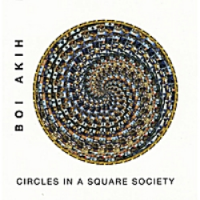Home » Jazz Articles » Live Review » Mel Martin and His Tenor Conclave: Piermont, NY, Septemb...
Mel Martin and His Tenor Conclave: Piermont, NY, September 14, 2012
The Turning Point Cafe
Piermont, NY
September 14, 2012
Before the first note sounded in a seventy-five minute set by Mel Martin and his Tenor Conclave, there was a false start of sorts. Most of the band was assembled and ready to hit when they were asked to leave the stage pending the anticipated arrival of a substantial number of audience latecomers. It a was reminder of the all-too- familiar struggle to draw paying customers into clubs, even on a Friday night in a venue which presents jazz on a semi-regular basis. Such is the state of the business of jazz performance in a sluggish economic climate, some three-quarters of a century removed from when the music was an integral part of popular culture. About fifteen minutes passed, a few more people shuffled in, the band returned to the stage and the music began.
Throughout the first three selections ("A Shade of Jade," "Punjab" and "Black Narcissus") of a program comprised of Joe Henderson compositions, arranged by Martin for three tenor saxophones and rhythm section, there were a number of noteworthy individual contributions. The venerable pianist Don Friedman comped in ways that enhanced each of the soloists, and offered witty improvisations of his own. Phil Palombi's stalwart bass line held the band together. Shinnosuke Takahashi drummed steady, propulsive time and executed brief, prickly fills. The solos by Martin, Tim Armacost, and John Richmond met the challenges of Martin's exacting riffs and evinced real character. Despite the strength of these performances, however, something about the band as a whole was amiss.
A few seconds after a ragged rendition of "The Kicker," the band's malaise lifted and everything came into sharp focus. Early on during Armacost's solo, the whole group jelled and reached an exhilarating peak that was sustained for the rest of the performance. The expectations inherent in enacting a tribute to Henderson's music; the respectful yet less-than-polished rendering of the tunes; and, at best, a half empty house—all of these factors were rendered irrelevant by the band's about-face. As Armacost tore through chorus after chorus, the music suddenly became something more than a loose aggregation of talented individuals.
Once the band became a unified, living organism, it was easier to savor the details of individual performances. Martin answered Armacost's unrelenting, brainy solo with a testimonial of his own. Without parroting specific influences, he evoked various eras of the jazz saxophone tradition in a natural, unstudied way, forging a coherent statement out of a loose and sometimes contradictory confederation of earthy sounds, such as a passionate holler that was tamed and converted into an allied phrase. While Martin shouted encouragement, Richmond juggled a series of appealingly dour phrases, offered straightforward bebop, and shaped terse lines over the band's riffs.
Armacost's ballad feature on Thelonious Monk's "Ask Me Now" (a tune often played by Henderson) confirmed the impression that the performance was about allowing the personality of each player to emerge, rather than proffering safe, dutiful versions of familiar repertoire. His take on Monk's composition juxtaposed spiraling combinations of tones, brief romantic asides, hard, fast runs, and brisk groups of notes flung into the air. The solo that followed never quite broke free of a ballad feel, but was quite expansive. Armacost left ample room for Friedman's comments as he spit out a handful of notes, briefly softened his tone, executed long, sweeping runs, and paraphrased a piece of Monk's melody.
Friedman made an electric keyboard sound perfectly natural in an otherwise acoustic group. Not unlike Martin, his forte as a soloist was a skillful juxtaposition of seemingly incongruent elements. As he consistently sped up and slowed down, Friedman's "Punjab" turn found a piece of the melody, repeated a rippling phrase, came down hard on one chord, and took flight with a gaggle of single notes.
Martin's genial, informative remarks about Henderson preceded "Mamacita," the set's final selection. He talked about playing in Henderson's West Coast big band, in which sitting next to the master in the sax section was like getting a free saxophone lesson. The timing of Martin's comments was fitting, because the group had already proved that a tribute to a significant figure in the jazz canon doesn't need to entail nostalgia or dutifully sound like a history lesson. Jazz will continue to struggle to find the audiences it richly deserves, but it's certain that musicians like Martin and his cohort will carry on and make music worthy of recognition.
Tags
Live Reviews
Mel Martin
David A. Orthmann
United States
Joe Henderson
Don Friedman
Phil Palombi
Tim Armacost
John Richmond
Thelonious Monk
PREVIOUS / NEXT
Support All About Jazz
 All About Jazz has been a pillar of jazz since 1995, championing it as an art form and, more importantly, supporting the musicians who make it. Our enduring commitment has made "AAJ" one of the most culturally important websites of its kind, read by hundreds of thousands of fans, musicians and industry figures every month.
All About Jazz has been a pillar of jazz since 1995, championing it as an art form and, more importantly, supporting the musicians who make it. Our enduring commitment has made "AAJ" one of the most culturally important websites of its kind, read by hundreds of thousands of fans, musicians and industry figures every month.





















